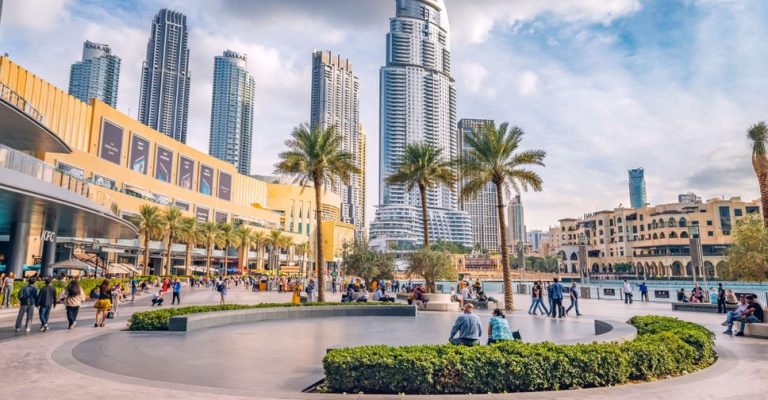Shopping malls are no longer just places to buy products—they’ve become lifestyle hubs, cultural experiences, and social destinations. As Gen Z and Millennials take center stage in consumer spending, modern mall design is transforming rapidly to meet their preferences and behaviors. From integrated technology to sustainability, today’s retail developers are redefining how shopping spaces are built and experienced.
Here’s a closer look at how mall design is evolving to attract the next generation of shoppers.
1. Experience Over Retail: The Rise of Lifestyle Centers
Modern malls are shifting focus from pure retail to experience-first destinations. Gen Z and Millennials seek places where they can dine, work, socialize, and relax.
- Examples: Rooftop gardens, art installations, and pop-up cafes are replacing traditional anchor stores.
- Design impact: Larger communal spaces, co-working lounges, and themed zones.
2. Smart Mall Technology Integration
From AI-powered signage to app-controlled parking, technology is at the heart of the modern mall.
- Wayfinding apps help users navigate large complexes using AR overlays.
- Heat mapping and AI sensors track foot traffic and optimize store placement.
- Touchless payments, interactive kiosks, and digital storefronts enhance convenience.
Notable Case: The Dubai Mall has integrated facial recognition and mobile concierge bots for a futuristic retail experience.
3. Sustainability and Green Architecture
Eco-conscious shoppers demand sustainably built malls. Designers are now incorporating:
- Natural lighting and ventilation
- Solar panels and green roofing systems
- Rainwater harvesting and waste recycling units
- LEED certifications for energy-efficient building
Example: CapitaSpring in Singapore includes vertical gardens, green terraces, and smart irrigation systems.
4. Mixed-Use Mall Complexes Are the Future
Gone are the days of malls isolated from city life. New developments now feature mixed-use elements, combining:
- Retail and residential spaces
- Offices and hotels
- Entertainment zones like cinemas, arcades, and gyms
This creates “live-work-play” ecosystems, especially popular among urban professionals.
5. Flexible Storefronts and Modular Spaces
In 2025, pop-up stores and short-term leases are booming. Malls now incorporate:
- Modular retail units that can be reconfigured quickly
- Mobile kiosks that adapt to seasonal events
- Showroom-style stores for digital-first brands
Why it matters: This supports D2C brands and e-commerce crossovers that want a temporary physical presence.
6. Hyper-Localization and Cultural Immersion
New mall designs cater to local tastes and traditions. Instead of global cookie-cutter models, developers are choosing:
- Architectural styles inspired by local heritage
- Art by local creatives and interactive installations
- Cultural event spaces to host performances, markets, and exhibitions
This community-driven design builds loyalty and deeper brand connection.
7. Enhanced Wellness and Zen Zones
Retail therapy now includes actual therapy—mental, physical, and spiritual.
Modern malls are building:
- Yoga decks, meditation pods, and spa lounges
- Wellness centers and health food courts
- Sensorial design using scents, calming lights, and ambient music
Example: Mall of the Emirates now features Mindfulness Lounges with virtual guided meditation.
8. Gaming and Esports Integration
With the gaming industry booming, malls are carving out zones for:
- Esports arenas and live-streaming stations
- Gaming cafes and VR experiences
- Tech playgrounds for AR/VR-powered games
These attractions draw younger audiences and extend mall dwell time.
9. Kid-Friendly, Parent-Savvy Spaces
Malls are enhancing family experience with:
- Edutainment zones with science and art labs
- Stroller-accessible design and nursing lounges
- Safe indoor playgrounds with supervised care
This ensures repeat visits from families looking for all-in-one outings.
10. Future-Proofing for Retail Shifts
Designers are planning ahead by:
- Allocating flexible zoning that adapts to new trends
- Building in infrastructure for drone delivery, dark stores, or micro-fulfillment centers
- Installing smart logistics corridors for last-mile delivery hubs
The result is a resilient mall layout that can evolve with new retail realities.
Key Mall Design Trends Summary Table
| Trend | Key Feature | Why It Matters |
|---|---|---|
| Lifestyle integration | Dining, co-working, social zones | Enhances visitor dwell time |
| Smart technology | AI, AR navigation, digital signage | Improves convenience and personalization |
| Sustainability | Green roofs, solar, LEED buildings | Aligns with eco-conscious values |
| Mixed-use infrastructure | Homes, offices, hotels | Creates 24/7 foot traffic and urban ecosystems |
| Modular retail | Pop-ups and flexible spaces | Supports e-commerce and indie brands |
| Cultural immersion | Local design and art | Builds community engagement and loyalty |
| Wellness architecture | Zen zones, health amenities | Appeals to holistic lifestyle seekers |
| Esports and gaming | Arenas and VR lounges | Captures Gen Z audience |
| Family-centric design | Edutainment and stroller access | Drives return visits from families |
| Future-proof logistics | Micro-fulfillment and drone access | Adapts to next-gen retail models |
Final Thoughts
The future of mall design is rooted in adaptability, innovation, and experience. As Gen Z and Millennials reshape global shopping habits, mall developers are stepping up with multi-functional spaces, immersive environments, and technology-powered journeys.
By embracing these trends, the malls of tomorrow aren’t just staying relevant—they’re becoming essential lifestyle hubs. And as the world redefines retail in 2025, it’s clear that design is now the ultimate sales strategy.

